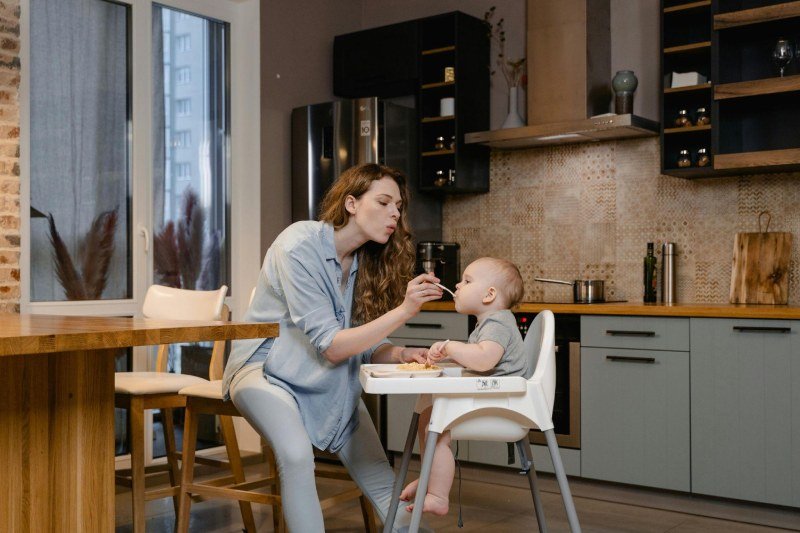The first time you’re alone with someone else’s kids can be nerve-wracking. What if something goes wrong? That’s why emergency skills matter so much when babysitting. Knowing how to handle a crisis — from a minor scrape to something more serious — keeps you prepared, shows parents you take your job seriously, and gives you the confidence to handle whatever comes your way.
Basic First Aid and CPR
First aid knowledge gives you tools to respond quickly to injuries. Your first task is to learn how to clean and bandage cuts properly. Always wash your hands first before you clean the wound with mild soap and water. Then, apply an antibiotic ointment on the area and cover it with a clean, disinfected bandage.
For minor burns, run cool (not cold) water over the area for 10-15 minutes. Don’t apply ice, butter, or ointments initially.
And as fun as it can be to land your first babysitting job, don’t start until you’ve been fully trained in CPR. A local Red Cross babysitter training course can teach you the basics in just one afternoon. Many community centers offer affordable or free CPR classes specifically designed for teens. These hands-on courses teach you proper chest compression techniques and rescue breathing that could save a child’s life.
What To Do in Case of Choking
Make sure you know how to recognize choking. A choking child can’t speak, cough effectively, or breathe. They might grab their throat, turn blue around the lips, or make high-pitched noises. Here’s what to do.
For infants under one year:
- Place the baby face-down on your forearm, making sure to support their head but keeping the head lower than the body;
- Hit them firmly between the shoulder blades;
- If unsuccessful, turn them face up and give five chest thrusts with two fingers at the center of the chest.
For children over one year:
- Stand behind them with your arms wrapped around their waist;
- Make a fist with one hand and place it just below the ribcage;
- Use your other hand to grab your fist and pull inward and upward with quick thrusts.
Fire Safety and Evacuation Plans
Before your first shift at any home, ask the parents to walk you through their evacuation plan. This is helpful for any home, but especially if the family you’re helping has a complicated floor plan. Spending just 5-10 minutes learning all the exits can give you peace of mind before you’re on your own. Always know two ways out of every room and set a meeting spot outside the house where you’ll gather with the children.
Also, learn where the home’s fire extinguisher is. Follow the PASS method for using a fire extinguisher:
- Pull the pin;
- Aim the extinguisher toward the base of the fire;
- Press the handle tightly;
- Sweep from side to side.
But remember, you should only attempt to extinguish very small fires. If a fire grows larger than a trash can, you should focus on getting the children and yourself out safely.
Most fires start in the kitchen, and many of them are avoidable. Learn basic kitchen safety. Never leave cooking unattended, keep flammable items away from the stove, and keep lids for pans nearby to smother small grease fires. Never try to put a grease fire out with water.
How To Handle Medical Emergencies
While rare, medical emergencies can happen, and you need to think quickly and stay calm to handle them. Before babysitting, always ask parents about any medical conditions the children have and where they keep emergency medications. Allergic reactions can progress rapidly, with symptoms including hives, swelling, difficulty breathing, and dizziness.
According to the Allergy and Asthma Network, over 8% of children in the U.S. have a food allergy. That means that understanding how to use an EpiPen correctly is non-negotiable as a babysitter. If a severe allergic reaction occurs, remove the safety cap, hold the device against the outer thigh, and press firmly until you hear a click. Hold it there for three seconds. Always call 911.
For asthma attacks, help the child use their prescribed inhaler and keep them calm. Sit them upright and monitor their symptoms. If breathing difficulties worsen, their lips turn blue, or they struggle to speak, call emergency services right away.
How To Stay Calm in an Emergency
When panic sets in during an emergency, you may find it difficult to think clearly. Take three deep breaths before acting to center yourself and clear your brain so you can think logically.
Practice box breathing when you feel overwhelmed. To do so, follow the rule of four: breathe in for four counts, hold for four, exhale for four, and pause for four. This technique helps lower your heart rate and clear your mind, coming in handy when you’re under pressure in an emergency.
Remember that children take emotional cues from you. If you stay calm, they’re more likely to remain calm, too. Speak in a steady, reassuring voice, even if you’re nervous inside.
Keep emergency contacts easily accessible when you babysit. Knowing help is just a phone call away can give you some comfort. Create a small card with parents’ contact information, emergency numbers, and the home address to keep with you at all times.
Be a Prepared Babysitter
Emergency response skills make you a better babysitter and build parents’ trust in your abilities. Learn first aid basics, CPR, choking response strategies, fire safety procedures, and how to handle medical emergencies. Taking a Red Cross babysitting course or local first aid training gives you hands-on practice and builds your confidence. Preparation is the key to keeping both you and the children in your care safe.




